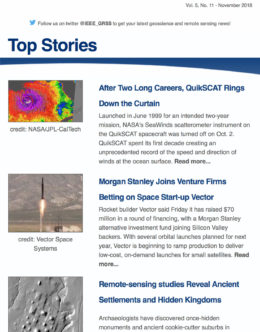Am I Qualified to be Considered for an IEEE Fellow?
Am I Qualified to be Considered for an IEEE Fellow?, Dr. Don Tan, Hosted by IEEE Women in Engineering (WIE), 11 January 2024
To reduce the mystification of the Fellow evaluation process and encourage more diverse representation across GRSS, we encourage you to consider your potential qualification as an IEEE Fellow.
Bill Emery, Chair of CFEC, and Antonio Plaza, Chair of GRSS FEC, have created a list of tasks if you feel you qualify. This advice comes from serving on the IEEE Fellows Committee for 6 years and from the present chair of the GRSS Fellows Evaluation Committee. If you have any questions or concerns regarding the process, please contact aplaza@unex.es or emery@colorado.edu for further information.
Steps to becoming an IEEE Fellow
- You need to be a senior member of the IEEE, which is the last elevation you can personally apply for. It is a very straightforward process and people in GRSS will help you.
- While there are multiple categories that one can be nominated under, most of the work we do fits best in the Research Engineer/Scientist category. The other classes of Technical Leader, Technical Innovator, Educator, and Standards rarely apply to GRSS members. It is much more difficult to get elevated in these other categories anyway. Approximately 80% of the fellow elevations are in the Research Engineer/Scientist category.
- You need to be able to identify 2 major contributions you have made to your field and be able to assess their impacts and verify them. This verification will usually take the form of refereed publications. IEEE does not base their fellow awards on lifetime achievement and a CV with a lengthy publication list is not an advantage. The lasting impacts of these major contributions are what are stressed by IEEE.
- The most important step is the selection of a nominator. This is usually an existing IEEE Fellow but that is not required. Non-fellows can nominate as well, and people have been elevated when nominated by non-fellows and even by non-IEEE members. You will work very closely with this nominator to get the nomination package to be as strong as possible. The nominator must agree that the two major contributions are appropriate for your fellow nomination.
- Together with your nominator, you need to select IEEE Fellows to write letters of reference for you. It is best if they do not come from your institution and can be considered as “outside” references. These letter writers must be willing to write very strong letters evaluating your technical contributions and your nominator should work with the letter writers to make sure they say extremely positive things. They should have access to the draft nomination so that they can refer to the value of the two major contributions. The letter writers are allowed to rank you and it is best if they rank you as “extraordinarily qualified.” Even a rank of “highly qualified” does not help you.
- In addition to the reference letter writers you need to find 3 people (can be any person, IEEE or non-IEEE members) to write letters of Endorsement. These people do not rank you. These people are not intended to evaluate your technical capabilities but rather you’re all-around contributions. They can be people from other groups you have worked with or agencies you have worked with. The endorsements and reference letters are submitted directly to the IEEE Fellows Site, but you need to allow time for them to be completed. Their nomination letters should complement the main reference letters and not provide redundant information about them.
- Dates to keep in mind: The fellow’s nomination website opens on 1 November and closes on 7 February of the following year. All nominations are done online so it is best if the nominator prepares the nomination offline and then submits it. Composing offline also gives you and the nominator time to get advice from people experienced with the fellows’ process.
- You need to provide the nominator with your IEEE Awards and service as well as your non-IEEE Awards and service. This is where your service as an Editor in Chief or an Associate Editor is included. Any contributions you have made to conferences can be included here. This category is space-limited so pick the best stuff to list.
- You will be evaluated by the GRSS Fellow Evaluation Committee (FEC) as a first step in the process. The committee will rank all of the nominations and forward those to the new Cohort Fellows Evaluation Committee (CFEC) which will include fellow nominations from the Aerospace and Electronics Society (AES) and the Ocean Engineering Society (OES). A final ranking will come out of the CFEC based on the different societies’ FEC rankings and referrals to the original nominations if needed. This final ranking then goes to the IEEE Fellows Committee which makes the final decisions on elevations to fellow. Remember that only 1/10 of 1% of the overall IEEE membership is elevated each year.























